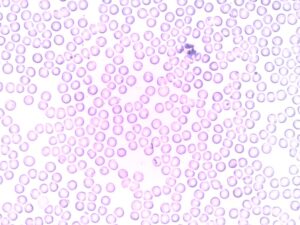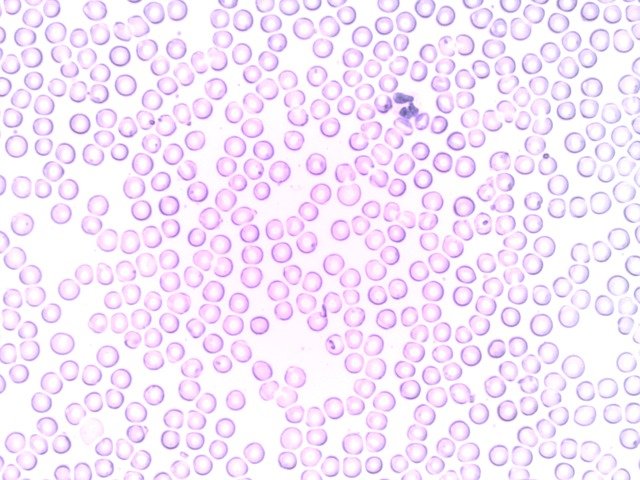
White blood cells, also known as leukocytes, are an essential component of your body’s immune system.
They’re crucial for defending you against bacteria, viruses, and parasites.
The bone marrow generates all five distinct varieties of white blood cells in the human body.
The number and kind of each white blood cell in your body can help your doctors understand you better.
White blood cells in the blood might be a sign of an illness or infection if they are unusually high.
When white blood cell levels rise, it’s usually because the body is sending more and more white blood cells to battle infections.
There are five types of white blood cells: neutrophils, lymphocytes, monocytes, eosinophils, and basophils.
The relative proportions of each type can give your doctor clues about the cause of an illness.
What is eosinophil?
Eosinophil is a type of white blood cell that constitutes about 1-4% of circulating leukocytes.
It was discovered in 1879 by F Langhans and named ‘eosinophile’ by E Henneguy in 1884.
The function of eosinophils is to release a variety of cytokines that play an important role in the immune response. It is also one of the primary cell types involved in allergic reactions and parasitic infections.
Eosinophil counts can be affected by certain malignancies, autoimmune diseases, and acute infections.
Although its mechanism isn’t completely understood, elevated levels of eosinophils might cause tissue damage in a number of diseases.
These include parasitic infections, rheumatoid arthritis, glomerulonephritis, eczema and other allergic reactions, asthma, lupus erythematosus, and Hodgkin’s disease.
What does a high Eosinophil count mean?
A high eosinophil count usually means that the person has an allergy, asthma, or a parasitic infection.
It can also be a sign of a more serious illness such as lupus erythematosus, Hodgkin’s disease, or multiple myeloma.
Doctors will often order blood tests to measure the number of eosinophils in a patient’s blood.
A high eosinophil count would mean that there is a greater number of these white blood cells compared to other types. Having a high eosinophil count is not always a bad thing.
Sometimes, it can be an indication of a parasitic infection or asthma.
If you have too many eosinophils in your blood, it means that there are too many white blood cells present.
Because these particular white blood cells release substances that can irritate tissues, it can cause the blood vessels to leak fluid.
What causes high eosinophil count?
Eosinophils are involved in a variety of allergic reactions and parasitic infections.
The most common cause for high eosinophil count is an allergy, which is typically triggered by inhalants such as pollen or mold spores.
Eosinophilic leukemia is another major cause of high eosinophil counts.
Eosinophils usually account for less than 7% of white blood cells in people with this kind of cancer.
The tumor cells produce excess eosinophils, which also have a localized accumulation in the nasal cavity, skin, esophagus, and lungs.
The bone marrow is the primary producer of eosinophils as well as other white blood cells.
Other causes can include VACTERL syndrome (an association of congenital abnormalities), T-cell leukemia, kidney disease (such as Focal Segmental Glomerulosclerosis), or allergic reaction to gold.
What are the symptoms of high eosinophils?
The symptoms of high eosinophils can vary depending on the underlying cause.
In general, however, people with high eosinophil counts may experience:
- Rash
- Swelling and inflammation
- Wheezing or difficulty breathing
- Itching
- Coughing
- Nasal congestion
- Sinus inflammation
- Headache
- Abdominal pain
- Diarrhea or constipation
- Fever
- Joint stiffness and swelling
People with asthma are more likely to have high eosinophil counts. Infants with a respiratory infection may also experience high eosinophils in the blood, but they tend to recover without treatment.
If you are experiencing any of the symptoms listed above, it is important to see your doctor for diagnosis and treatment.
Depending on the underlying cause, various treatments may be needed.
In most cases, however, managing the allergy or infection will resolve the high eosinophil count.
- See also: What will happen if you have too many red blood cells
- See also: What happens when your oxygen level drops too low
What are the possible adverse effects of an eosinophil count?
People with high eosinophil counts are more likely to have asthma or allergic reactions.
When allergies are involved, the symptoms may be limited to hives, rashes, and swelling of the lips. In other cases, people might experience difficulty breathing, wheezing, shortness of breath, coughing up blood (hemoptysis), and chest pain.
A high eosinophil count may also be a sign of a more serious illness, such as lupus erythematosus, Hodgkin’s disease, or multiple myeloma.
If you are experiencing any of the symptoms listed above, it is important to see your doctor for diagnosis and treatment.
What is the treatment for high eosinophils?
Treatment for high eosinophils depends on the underlying cause.
For people who have allergies, they may be advised to take antihistamines or nasal steroids.
Aspirin and non-steroid anti-inflammatory drugs (NSAIDs) might also help with allergic reactions involving inflammation of tissues in the respiratory system.
People who are infected with parasites may need to take anti-parasitic drugs.
If the high eosinophil count is due to leukemia, chemotherapy may be prescribed.
In some cases, a bone marrow transplant may be necessary.
Managing the underlying cause is the key to resolving the high eosinophil count.
With proper treatment, most people will see a decrease in the number of white blood cells and return to normal levels.
Conclusion
High eosinophil levels can be a sign of numerous medical conditions, including asthma, allergies, parasitic infections, and leukemia.
If you are experiencing any of the symptoms listed above, it is important to see your doctor for diagnosis and treatment.
Depending on the underlying cause, various treatments may be needed.
In most cases, however, managing the allergy or infection will resolve the high eosinophil count.



